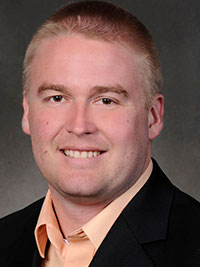 Jonathon Nield – Sr. Manager, Network Planning
Jonathon Nield – Sr. Manager, Network Planning
Have you always had a passion for aviation?
JN: I remember my first flight when I was seven years old from Salt Lake City to Los Angeles on a Delta 757 and being completely fascinated with the power I felt on takeoff. Immediately I fell in love with flying. I’m likely one of the odd avgeeks out there that never really had an interest in becoming a pilot so never considered a career in aviation until college when I suddenly realized I could make a career out of my love for flying on the business side, which is where my true interest was.
How many airlines have you flown on?
JN: Oh wow…. I’m going to miss some, but I’ll try. 32. F9, WN, AA, UA, AS, VX, B6, NK, G4, DL, FL, 9K, US, LH, CZ, MU, AF, BA, CA, KL, EK, WF. QR, OZ, AI, EI, KA, KQ, VS, SY, HP, LO
Tell us your biggest av-geek story:
JN: I had an incredible experience when I flew from PHX to SEA to see the very first Boeing 787-8 flight.
What does your (work) day-to-day look like?
JN: I have no idea. That’s why I love it. 😊
What pieces of information do you value the most from airports?
JN: We have Diio. We can pull top O&Ds from an airport very quickly. The things I value most from an airport:
-
- Creative analysis that maybe is too time intensive for us to do for every market, yet we can’t just simply pull out of Diio. For example, what is the elasticity of a market based on historical fares/demand? What is the behavior of the competitive mix in your market? What has a market shown historically that could indicate what it might be in the future (Max sizes, stimulations, etc.)? Have schedule changes in a market impacted performance of the market from a load/yield perspective? On a semi-related note, I wanted to share that we hear so many times that a market shouldn’t have been exited because the planes were full. The truth is that it typically takes a high load factor AND a high enough fare TOGETHER to make a route profitable. We are often asked “Why don’t you just raise the fares if they are too low?” That’s unfortunately not how it works. We are charging the fares that the market is dictating based on the demand to get people to buy our seats. If the demand for our seats starts filling the plane too fast, we’ll raise fares. If the plane isn’t filling fast enough, we’ll lower fares. We’ll constantly keep this balancing act going until the day of departure.
Favorite thing to do outside of work:
JN: So hard to choose. I mean, of course hanging out with my wife and kids at our favorite breweries in Northern Colorado. My selfish favorite thing to do is to swim and in fact every Monday, Wednesday, and Friday I swim on my lunch break at work. It’s a great way to solve challenging problems away from the spreadsheets!
Working With APAC
“I’ve had the unique privilege of working with Carrie (Kelly) as a coworker at a major U.S. airline and now as a consultant where she delivers Frontier with insights into where to invest capacity in our rapidly growing network. Having seen her work from both perspectives, I have 100% confidence that what Carrie delivers is relevant, accurate, and insightful in a way that raises the bar for the entire airline industry. Beyond her solid skills and industry knowledge, Carrie is an absolute joy to work with and I would highly recommend her to any organization needing the highest caliber of air service consulting.” — Jonathon Nield

